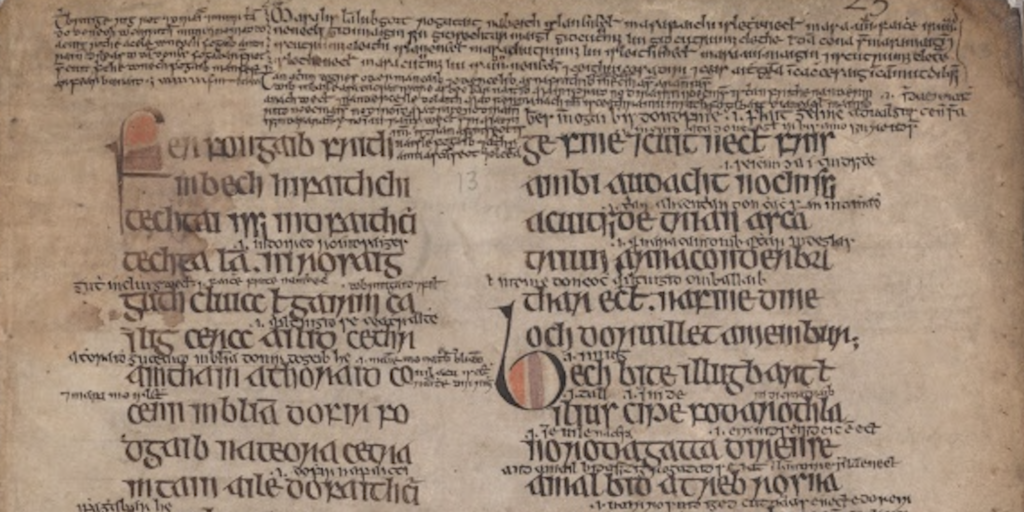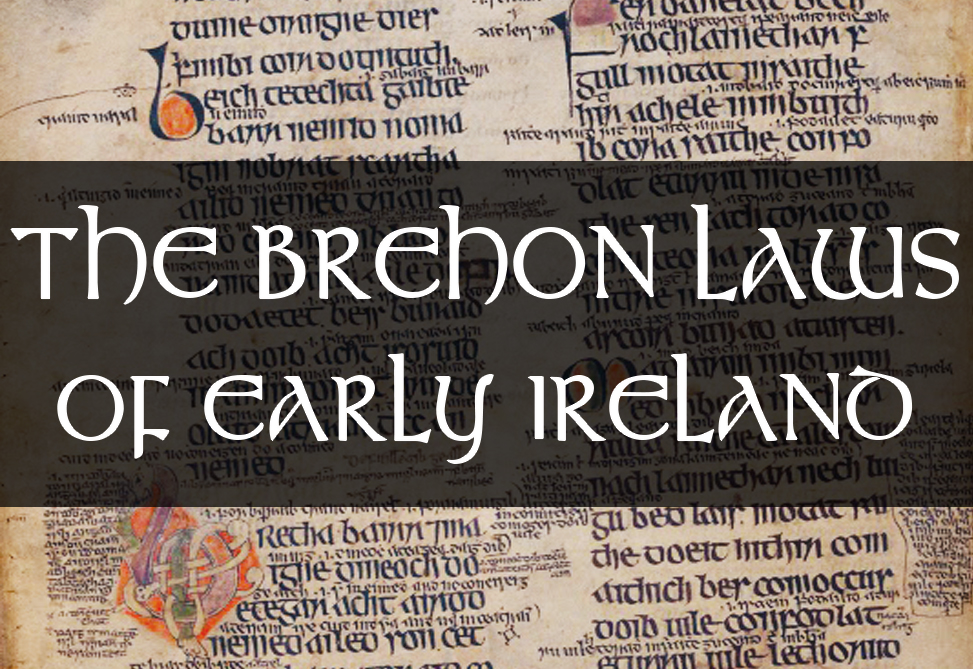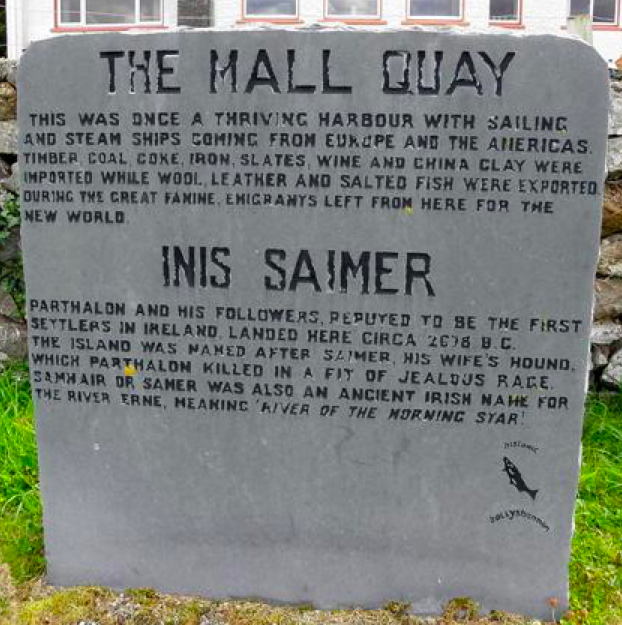In the complex tapestry of legal history, the ancient Irish Brehon Law stands out as a unique and intriguing legal system. As we explore Brehon Law and its economic underpinnings, the parallels with modern economic analysis of law, particularly Richard Posner’s Chicago School approach, become evident. This article delves into the intricacies of Brehon Law and draws connections with Posner’s economic analysis.
Though separated by centuries and cultural context, the economic underpinnings of Brehon Law and Posner’s economic analysis of law provide an interesting point of comparison. Both approaches recognize the importance of incentives, individual rationality, and the role of law in shaping behavior.
Though these two legal philosophies were born in entirely different epochs, under vastly contrasting societal structures, a closer examination reveals a surprising commonality. While rooted in different traditions, methodologies, and historical contexts, both systems reveal a profound understanding of the interconnectedness of law, economics, human behavior, and societal norms.
By examining both, scholars can gain a more profound understanding of how law and economics have always been intertwined, reflecting human nature’s consistent drive toward social organization and value creation.
Richard Posner’s Economic Analysis of Law

Richard Posner [1973] brought the economic analysis of law to the attention of the general legal academy
Richard Posner, a leading figure in the field of law and economics, has championed an approach to legal analysis that emphasizes the economic concepts of efficiency, incentives, and rational choice. He views law as a system that shapes behavior by creating incentives and sees legal rules as tools for promoting social welfare.
Efficiency Principle
Richard Posner’s work is chiefly recognized for his application of the efficiency principle to legal norms. He argues that common law principles tend to evolve towards economic efficiency, and laws should be crafted with this goal in mind.
Pareto Efficiency
Posner’s analysis often refers to Pareto efficiency, where a legal rule is preferred if it makes at least one person better off without making anyone else worse off.
Kaldor-Hicks Efficiency
Posner also employs the Kaldor-Hicks criterion, considering a rule efficient if those who are made better off could potentially compensate those made worse off, thus resulting in a net societal gain.
Rational Choice and Game Theory
According to Posner, individuals act rationally, seeking to maximize their own well-being. Laws, therefore, should be designed with an understanding of how people respond to incentives. Game theory also plays a vital role in his analyses, examining how individuals interact within specific rules and strategies, providing insights into how laws can shape behavior.
Cost-Benefit Analysis
Posner advocates the use of cost-benefit analysis in legal decision-making, assessing the overall social benefits and costs of different legal rules.
Common Law as an Evolutionary Process
Posner has described common law as an evolutionary process, where judges make decisions that tend to promote efficiency over time.
Brehon Law: An Economic Perspective

Though distinct from Posner’s modern economic analysis, the Brehon Law system exhibits some similarities in its approach to legal matters. Brehon Law, a decentralized legal system that guided Irish society from the 7th to the 17th centuries, was not merely a collection of rules but a dynamic framework deeply interwoven with social norms, customs, and the economic realities of its time. It took into account complex relationships, kinship, status, and even the broader societal welfare, showing a nuanced understanding of human behavior and incentives.
Restitution and Compensation
Brehon Law focused on restitution and compensation, rather than punishment. This approach aligns with an economic perspective, emphasizing the resolution of disputes in a way that restores value and maintains social harmony.
Decentralization and Custom
The decentralized nature of Brehon Law allowed for legal decisions to be tailored to local customs and values, possibly leading to outcomes that were more closely aligned with community preferences.
Contractual Nature
Agreements under Brehon Law were highly contractual, reflecting a clear understanding of rights, duties, and mutual obligations. This can be seen as a precursor to modern contract law, which is strongly influenced by economic thinking.
Bridging the Gap Between the Ancient and the New
Brehon Law offers an intriguing case study for legal scholars and economists, revealing insights into a legal system that balanced local autonomy with a strong focus on restitution and contractual relationships. An economic analysis, such as one provided by Richard Posner, could illuminate how this ancient legal system influenced social behavior and economic interactions in early Irish society.
The comparison between Richard Posner’s modern economic analysis of law and Brehon Law’s ancient legal system unveils intricate connections between legal reasoning and economic principles across ages. While Posner’s work is distinctly grounded in modern economic theory and mathematical analysis, Brehon Law offers a more intuitive and contextual understanding of economics within the legal framework.
The convergence and divergence between these two systems emphasize the complex relationship between law, economics, human behavior, and societal norms. This relationship transcends cultures and epochs, affirming that economic thinking is not a mere modern phenomenon but an intrinsic aspect of human society and legal reasoning.
In a world where legal systems continue to evolve, the study of Brehon Law offers valuable insights and a reflection on how ancient wisdom can still inform and enrich our modern understanding of law. It affirms that economic thinking is not merely a contemporary phenomenon but a fundamental aspect of human society that transcends cultures and epochs.
Let us now consider the similarities and differences between these two systems. In doing so, I aim to affirm the universality of these principles across ages.
Efficiency in the Law
| RICHARD POSNER | BREHON LAW |
|---|---|
| Posner places great emphasis on efficiency. He applies mathematical concepts like Pareto and Kaldor-Hicks efficiency to assess legal rules. His approach prioritizes maximizing net societal benefits, where laws are crafted to allocate resources where they are most valuable. | Brehon Law’s focus on restitution and compensation reflects a belief that wrongs can be cured with the correct economic calculation. By emphasizing making victims whole and maintaining social harmony, Brehon Law sought to restore value and balance within the community, thus aligning with a proto-economic perspective. |
Both systems converge in their pursuit of efficiency, albeit through divergent methodologies. Posner’s approach utilizes analytical rigor to achieve utilitarian goals, whereas Brehon Law weaves efficiency into a broader fabric of human relationships and societal balance. While Posner’s methodology is precise and quantitative, targeting economic optimization, Brehon Law offers a more qualitative, communal perspective that seeks to harmonize societal interests. These contrasting approaches highlight a shared understanding of efficiency’s vital role in legal systems, reflecting diverse paths toward the common goal of fair and balanced resource allocation.
Economic Nature of Restitution
| RICHARD POSNER | BREHON LAW |
|---|---|
| Posner delves into the concept of restitution through the lens of economic efficiency. He sees the legal system as a means to maximize societal welfare by crafting rules that lead to efficient allocations of resources. Restitution, in this view, serves to rectify imbalances and wrongs by restoring parties to their original state or compensating them in a way that reflects the economic value of the loss. By emphasizing the efficiency of restitution, Posner’s approach aligns with the broader goal of achieving an economic equilibrium where resources are used most valuably. | In the Brehon Law system, restitution played a central role, reflecting a distinctly economic character. All wrongs, whether personal injury, theft, or property damage, could be compensated for, with the compensation often carefully calculated based on the status of the parties involved and the nature of the wrong. This approach sought to make the victim whole and restore social harmony by addressing the economic aspect of the harm. Rather than focusing on punishment, Brehon Law emphasized restoration and compensation, aiming to achieve a balanced and harmonious state within the community. |
Both perspectives recognize the essential economic nature of wrongs and see restitution as a mechanism to redress those wrongs in economic terms. Posner’s approach is more analytical, employing mathematical concepts to define efficiency, while Brehon Law’s method is more intuitive and socially rooted.
However, both systems converge in their underlying reasoning that wrongs are essentially economic in nature. They share the belief that restitution serves to realign resources, restore value, and achieve a balanced state that reflects societal values and economic principles.
Whether in the modern context of Posner’s legal economics or the ancient framework of Brehon Law, the focus on efficiency, restoration, and economic balance remains a constant theme, affirming the intrinsic relationship between law, economics, and human society.
Rational Behavior Understanding
| RICHARD POSNER | BREHON LAW |
|---|---|
| Posner’s legal analysis incorporates rational choice theory, viewing individuals as utility-maximizing entities. He explores how legal rules create incentives that guide rational behavior, often employing game theory to model complex interactions. | Brehon Law understood human behavior within a web of social obligations and incentives. While not conceptualized in mathematical terms, this legal system recognized that individuals acted according to social status, kinship, and community expectations. |
Both Posner and Brehon Law recognize the importance of incentives and rational behavior. However, while Posner employs mathematical models, Brehon Law presents a more intuitive, context-driven understanding of human action.
Legal Evolution
| RICHARD POSNER | BREHON LAW |
| Posner sees common law as an evolving system, gradually moving towards efficiency. He views judges’ decisions as part of an adaptive process that incrementally shapes law to promote societal welfare. | The flexibility and adaptability of Brehon Law allowed it to align with local customs and values over time. Though not necessarily driven by a conscious pursuit of economic efficiency, this legal system evolved to meet the changing needs and contexts of the society it served. |
Both legal systems acknowledge a form of evolution. While Posner’s view emphasizes a systematic progression towards efficiency, Brehon Law’s evolution is more organic, adapting to social contexts without necessarily targeting economic outcomes.
Practical Applications and Comparisons
1. Property Disputes and Restitution
Brehon Law Example: In Brehon Law, property disputes were often resolved through restitution and compensation rather than punishment. If someone were to unlawfully cut down a neighbor’s tree, the responsible party would be required to pay compensation based on the value of the tree and any additional damage caused.
Posner’s Approach: Posner might analyze this same issue by assessing the economic efficiency of the restitution. By compensating the victim, resources are allocated in a way that reflects their value to both parties, thereby leading to an economically efficient outcome.
2. Contractual Agreements and Relationships
Brehon Law Example: Under Brehon Law, contractual relationships, such as those between a lord and his vassal, were highly detailed, laying out explicit rights and duties. If a lord provided land and protection, the vassal would owe certain services or goods in return.
Posner’s Approach: Posner would likely analyze such a contractual relationship through the lens of efficiency and rational choice, ensuring that the contract’s terms align with both parties’ incentives and lead to a Pareto-optimal agreement that benefits both sides without making anyone worse off.
3. Adapting to Local Customs and Social Hierarchy
Brehon Law Example: Brehon Law adapted to local customs, with legal rights and obligations often tied to social status and kinship. For instance, the compensation owed for an injury might vary based on the social status of the injured party.
Posner’s Approach: While Posner’s analysis might not directly incorporate social hierarchy, he would recognize the importance of a legal system adapting to local values and customs. He might analyze how the law’s adaptation to social norms can lead to greater compliance and thus a more efficient legal system.
4. Evolution of Legal Rules and Norms
Brehon Law Example: Over time, Brehon Law evolved and adapted to the changing needs of Irish society, reflecting shifts in economic, social, and political conditions.
Posner’s Approach: Posner’s belief that common law evolves toward efficiency might analyze this evolution in terms of how legal rules adapt to maximize societal welfare, even if the mechanisms and objectives differ from Brehon Law.

Where the analytical prowess of Posner’s modern legal economics meets the social wisdom of ancient Brehon Law, we find an unlikely harmony. Both approaches, though centuries apart and seemingly worlds away, dance to the same underlying rhythm of efficiency, restitution, and balance.
It’s a timeless duet that transcends epochs, reminding us that the pursuit of justice isn’t merely about codes and calculations but a human endeavor, ever woven into the fabric of society. The lessons from this legal pas de deux echo across the ages, illuminating our path with insights that resonate, regardless of the era we inhabit. In law, as in life, it seems the old and new are often but different verses of the same eternal song.






